Pet-Friendly Exterminator
Keeping your home pest-free and your furry friends and pets safe can be quite a challenge. The last thing you want is to use harsh chemicals that can harm your beloved pets.
Imagine a world where you can bid farewell to those unwanted intruders without compromising the well-being of your pets. It’s not just a dream; it’s a reality! With pet-friendly pest control, you can create a safe and pest-free environment for both you and your furry companions to enjoy.
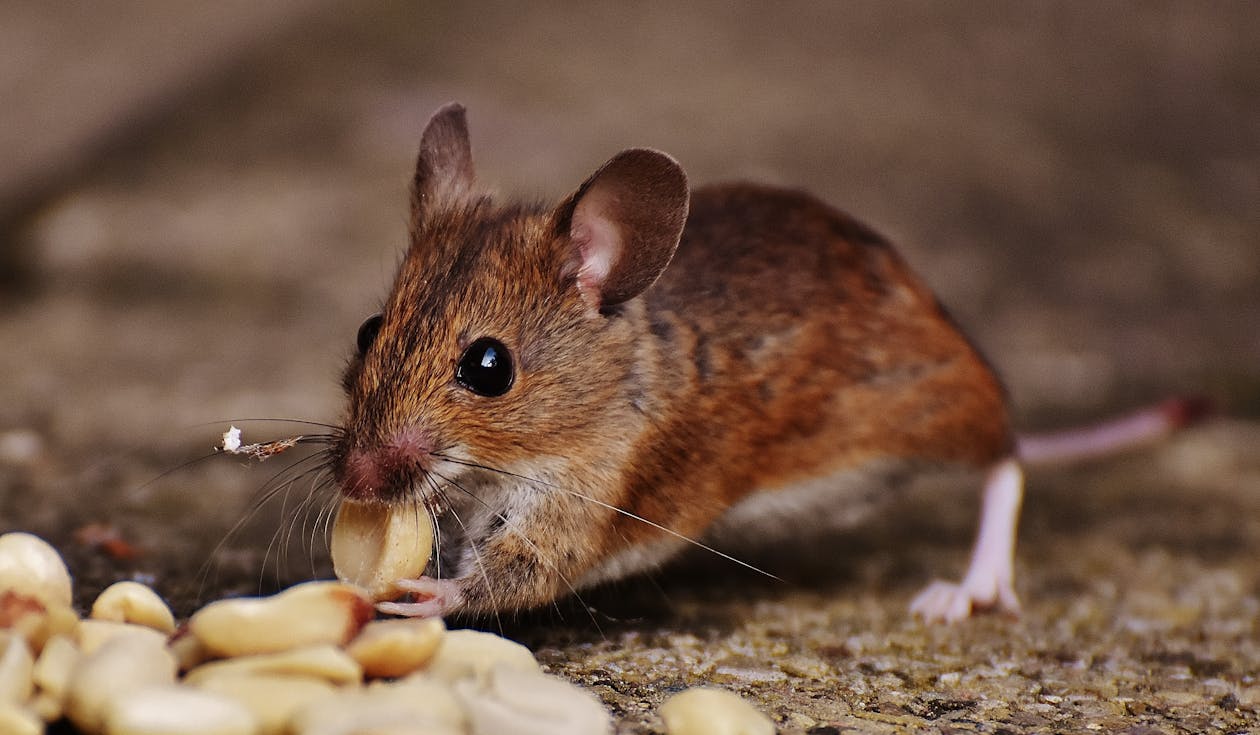
So, if you’re tired of playing a never-ending game of cat and mouse with those pesky critters, it’s time to take action.
In this article, we’ll take you through some of the pet-friendly control chemicals you can use in your home and yard. Don’t let pests get the best of you and your pets. Take a leap towards a pest-free life and give your home and yard the love and care they deserve.
What Chemicals Are Usually Used In Pest Control?
So, what chemicals are typically used in pest control? The most common pesticides used by pest control companies include pyrethroids, which are synthetic versions of natural insecticides derived from chrysanthemum flowers. These chemicals are effective against a wide range of pests, including ants, mosquitoes, and fleas.
The chemicals typically used in traditional pest control include insecticides, herbicides, rodenticides, and fungicides. These chemicals are designed to kill or repel pests, but they can also pose a risk to pets if ingested or if they come into contact with them.
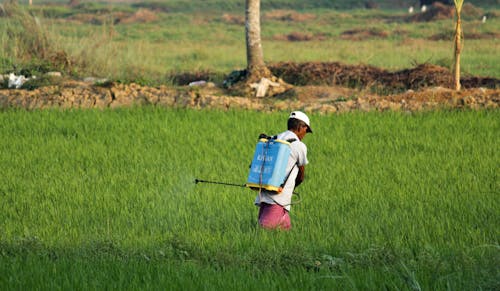
Insecticides, for example, are commonly used to control insects such as ants, cockroaches, and mosquitoes. They often contain chemicals such as pyrethroids or organophosphates, which can be toxic to pets if consumed or if they groom themselves after walking on treated surfaces.
Herbicides are used to control weeds and unwanted vegetation. Glyphosate is a commonly used herbicide that has been linked to health issues in pets. It’s crucial to keep pets away from areas where herbicides have been applied to prevent ingestion or skin contact.
Rodenticides are used to eliminate rodents like rats and mice. These chemicals are designed to be attractive to rodents but can also be enticing to pets. Ingestion of rodenticides can lead to severe poisoning and even death in pets, so it’s important to keep them away from these products.
Fungicides are used to control fungal infections in plants and crops. While pets are less likely to come into direct contact with fungicides, it’s still important to keep them away from treated areas to prevent accidental ingestion or exposure.
However, it’s important to note that even pet-friendly pest control chemicals should be used with caution. While they are designed to be safer for pets than traditional pesticides, it’s still crucial to follow the instructions carefully and keep your pets away from treated areas until the product has dried or settled.
What Chemical Do Most Pest Control Companies Use?
Most top pest control service companies use a range of chemicals and products to address pest infestations. However, the specific chemicals used can vary depending on the company’s practices, the type of pest being targeted, and the preferences of the homeowner.
While it’s challenging to pinpoint a single chemical that most pest control companies use, there are a few common ones that are frequently employed in the industry. It’s important to note that these chemicals may not be pet-friendly, so it’s crucial to discuss pet safety with the pest control company before treatment.
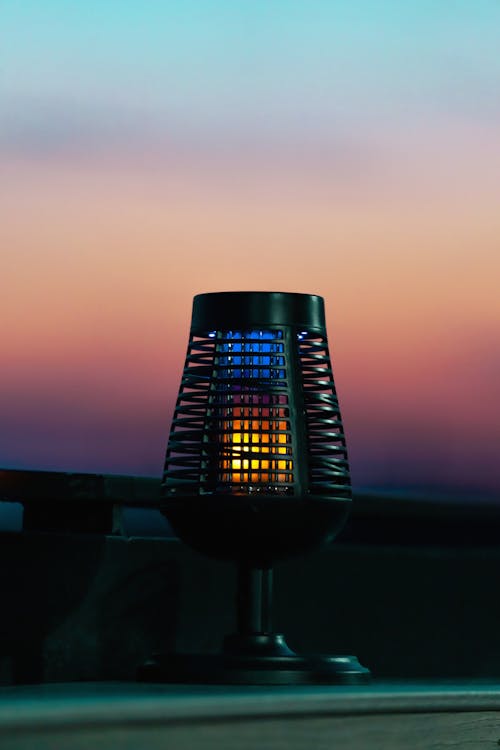
Pyrethroids: Pyrethroids are synthetic chemicals that mimic the insecticidal properties of naturally occurring pyrethrins, derived from chrysanthemum flowers. They are widely used to control a variety of insects such as mosquitoes, ants, and fleas. While pyrethroids have low toxicity to mammals, including pets, they can still cause adverse effects if pets are exposed to high concentrations.
Fipronil: Fipronil is an insecticide commonly used for controlling ants, termites, and fleas. It works by disrupting the central nervous system of pests. While fipronil is generally considered safe for pets when used as directed, it’s crucial to follow the instructions provided by the pest control professional to minimize any potential risks.
Boric Acid: Boric acid is a naturally occurring compound that is often used as a pesticide against cockroaches, ants, and silverfish. It acts as a stomach poison and desiccant, effectively dehydrating pests. Boric acid is generally considered low in toxicity to humans and pets, but it’s still important to prevent pets from ingesting large amounts.
Insect Growth Regulators (IGRs): IGRs are chemicals that disrupt the growth and development of insects, preventing them from reaching maturity and reproducing. They are commonly used for controlling pests such as fleas and stored product pests. IGRs typically have low toxicity to mammals, including pets, but it’s essential to use them according to the label instructions.
The Most Common Pesticides Used To Control Pests
Pesticides are chemical substances used to control and eliminate pests that can cause damage to crops, and structures, or pose a threat to human health. While there is a wide range of pesticides available, the most common ones used for pest control can be categorized into several groups:
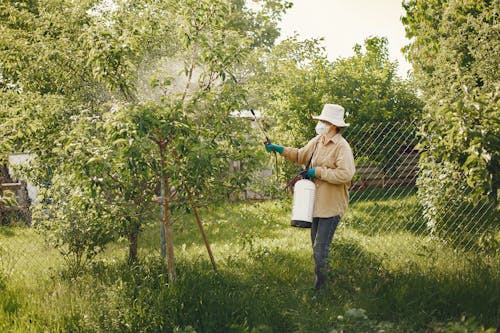
Insecticides: Insecticides are pesticides designed to target and eliminate insects. They come in various forms, including sprays, baits, specks of dust, and granules. Some of the most common insecticides used for pest control include:
- Organophosphates
- Carbamates
- Pyrethroids
- Neonicotinoids
Herbicides: Herbicides are pesticides used to control or eliminate weeds. They are commonly used in agricultural, landscaping, and gardening settings. Some of the most common herbicides include:
- Glyphosate
- Atrazine
Rodenticides: Rodenticides are pesticides used to control rodent populations, such as rats and mice. They come in different formulations, including baits, pellets, and blocks. Common rodenticides include:
- Anticoagulant rodenticides
- Non-anticoagulant rodenticides
What pest control is safe for pets?
When it comes to pest control, the safety of your pets is a top priority. Fortunately for pet owners, there are several pet-friendly pest control methods and products available that can effectively manage pests while minimizing risks to your furry friends. Here are some safe pest control options for pets:
Natural and Organic Pest Control: Opting for natural and organic pest control methods can be a safe choice for pets. These methods utilize natural ingredients such as plant extracts, essential oils, and biological controls to repel or eliminate pests. Examples include neem oil, diatomaceous earth, and beneficial insects like ladybugs.
Integrated Pest Management (IPM): IPM is an approach that focuses on preventive measures and uses a combination of pest control methods to minimize the use of pesticides. It involves identifying the root cause of pest issues, implementing preventive measures like sealing cracks and eliminating food sources, and using targeted treatments only when necessary.
Pet-Safe Pesticides: If chemical pesticides are required, there are pet-safe options available. Look for pesticides specifically labeled as pet-friendly or safe for use around pets. These pet food and products are formulated to have lower toxicity levels and pose reduced risks to animals. Always carefully follow the instructions on the product label to ensure proper usage and pet safety.
Professional Pest Control Services: Hiring professional pest control services that specialize in pet-friendly approaches can provide peace of mind. These experts have the knowledge and experience to effectively manage pests while prioritizing the safety of your pets. They can recommend and implement pet-safe pest control methods tailored to your specific situation.
Regardless of the pest control method chosen, it’s important to take precautions to safeguard your pets during and after treatment. Keep them away from treated areas until the products have dried or settled, and follow any specific instructions provided by the pest control professional or product manufacturer.
Remember, if you have concerns about pet protection or questions about the safety of a particular pest control method or product, consult with your veterinarian or a licensed pest control expert who can provide guidance based on your pet’s specific needs and circumstances.
The Pesticide That Kills: Pyrethrin
Pyrethrin is a commonly used pesticide in pest control, known for its effectiveness in killing a wide range of insects. However, it’s important to be aware of its potential risks, especially when it comes to the safety of your pets.
One of the main concerns with pyrethrin is its toxicity to animals, including cats and dogs. These pets are more sensitive to pyrethrin than humans and can experience adverse reactions if exposed to high concentrations or if they accidentally ingest or come into direct contact with the pesticide.
While pyrethrin can be effective in controlling pests, it’s important to weigh the risks and benefits carefully, especially when considering the safety of your pets. Always prioritize their health and seek alternative pet-friendly pest control methods when possible.
What Chemicals Do Pest Control Companies Use For Cockroaches?
Pest control companies employ various chemicals to combat cockroach infestations, targeting these resilient pests and ensuring effective eradication. While specific products may vary depending on the pest control company and their preferred methods, there are a few common chemicals often used for cockroach control. Let’s explore some of them:
Insect Growth Regulators (IGRs): IGRs are synthetic chemicals that disrupt the growth and development of pest populations of insects, including cockroaches. They interfere with their molting process and reproduction, ultimately leading to population decline. IGRs are considered safe for humans and pets because they have minimal toxicity and are selective in their action, targeting only specific insect species.
Desiccants: Desiccants are substances that cause dehydration in insects by absorbing moisture from their bodies. One commonly used desiccant in cockroach control is boric acid. Boric acid is relatively low in toxicity to humans and pets when used as directed, making it a popular choice for pest control companies. It acts as a stomach poison when ingested by cockroaches, gradually affecting their digestive system and leading to their demise.
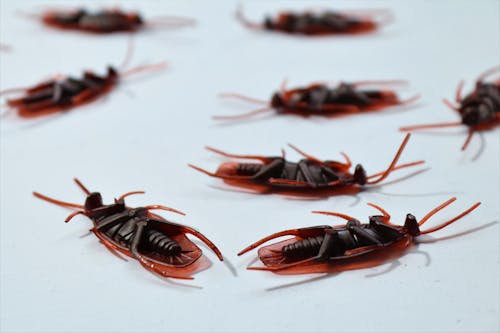
Insecticidal Dust: Insecticidal clouds of dust are fine powders containing chemical insecticides that are effective against a range of crawling insects, including cockroaches. These specks of dust often contain active ingredients such as diatomaceous earth or silica aerogel, which damage the insects’ exoskeleton, leading to dehydration and death. When applied properly, these specks of dust can be targeted to specific areas where cockroaches hide and travel.
Contact Insecticides: Contact insecticides are chemicals designed to kill insects upon direct contact. They can be used as sprays, aerosols, or liquid formulations. These insecticides typically contain active ingredients like pyrethroids or pyrethrins, which quickly affect the nervous system of cockroaches, leading to paralysis and death. When using contact insecticides, it’s important to follow the instructions carefully and apply them in areas where cockroaches are likely to come into contact.
How pest control professionals can help
Pest control professionals play a crucial role in helping homeowners and businesses deal with pest infestations effectively. Here’s how they can help:
Inspection and Assessment: Pest control professionals have the knowledge and expertise to conduct thorough inspections of your property. They can identify the type of pest infestation, determine the extent of the problem, and assess any underlying factors that may be contributing to the infestation. This information is vital in developing an effective pest control plan.
Customized Treatment Plans: Based on the inspection findings, pest control professionals can create customized treatment plans tailored to your specific needs. They consider factors such as the type of pests, the severity of the infestation, the size of the property, and the presence of pets or vulnerable individuals. These plans may include a combination of chemical treatments, traps, exclusion methods, and other preventive measures.
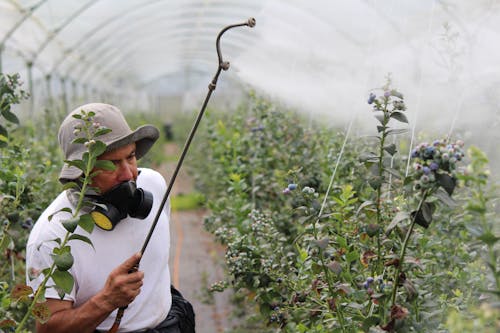
Safe and Effective Pest Control Methods: Pest control professionals are trained in the proper use of pest control products and methods. They have access to a wide range of professional-grade products that are more effective than over-the-counter solutions. Importantly, they understand the potential risks associated with these products and take necessary precautions to ensure the safety of occupants, including children and pets.
Targeted Pest Elimination: Pest control professionals have the knowledge and experience to target pests at their source. They can identify the breeding grounds, entry points, and hiding spots of pests, allowing them to apply treatments strategically. By addressing the root causes of infestations, professionals can achieve long-lasting results and prevent future pest problems.
Integrated Pest Management (IPM): Many pest control professionals practice IPM, which is an environmentally friendly and sustainable approach to pest management. IPM focuses on a combination of techniques, including pest monitoring, habitat modification, and the use of non-chemical methods whenever possible. This approach minimizes the use of pesticides and emphasizes long-term prevention.
Ongoing Maintenance and Monitoring: Pest control professionals provide ongoing maintenance and monitoring services to ensure that pest problems do not reoccur. They may schedule regular visits to inspect the property, monitor pest activity, and make any necessary adjustments to the treatment plan. This proactive approach helps to catch potential issues early and prevent larger infestations.
Expert Advice and Education: Pest control professionals can offer valuable advice on preventing future infestations. They can educate homeowners about proper sanitation practices, structural maintenance, and other preventive measures. By understanding the habits and vulnerabilities of pests, homeowners can take proactive steps to reduce the risk of future pest problems.
When facing a pest infestation, it is often best to consult with a licensed and reputable pest control professional. Their expertise, experience, and access to specialized tools and products can help you effectively address the problem while ensuring the safety of your home, family, and pets.
Safer Home Plug-In Fly Trap Review
In this review, we’ll take a closer look at the Safer Home Plug-In Fly Trap and evaluate its effectiveness in trapping flies while ensuring the safety of your home environment.
The Safer Home Plug-In Fly Trap is designed to attract and trap flies using a combination of UV light and a non-toxic adhesive trapping surface. Its plug-in design makes it convenient to use, requiring no batteries or additional setup. Let’s explore its features and performance in more detail.
One of the standout features of the Safer Home Plug-In Fly Trap is its UV light technology. The UV light attracts flies, luring them toward the trap. Once they come in contact with the non-toxic adhesive-trapping surface, they get stuck and are unable to escape. This mechanism offers a safe and chemical-free solution for dealing with fly infestations.
Setting up the fly trap is a breeze. Simply plug it into an electrical outlet and let it do its job. The compact size of the trap allows you to place it in various locations around your home, such as the kitchen, living room, or patio, where flies are commonly found. Its discreet design ensures that it doesn’t disrupt the aesthetics of your space.
One of the major advantages of the Safer Home Plug-In Fly Trap is its pet and child-friendly nature. Since it doesn’t involve the use of harmful chemicals or pesticides, you can have peace of mind knowing that your furry friends and little ones are safe from exposure to toxic substances. The non-toxic adhesive surface ensures that flies are trapped without posing a risk to your pets or family members.
In terms of effectiveness, the Safer Home Plug-In Fly Trap delivers satisfactory results. The combination of UV light and the adhesive surface proves to be an effective lure, attracting and trapping flies. Users report a noticeable reduction in fly populations within a short period of use. However, it’s important to note that the effects may vary depending on the severity of the fly infestation and the specific conditions of your home environment.
Maintenance of the fly trap is relatively simple. When the adhesive surface becomes full or less sticky due to trapped flies, you can easily replace it with a new adhesive sheet. This ensures that the trap remains effective over time. Replacement adhesive sheets are typically available for purchase separately.
Pest Control Safety Tips
When it comes to pest control, ensuring the safety of yourself, your family, and your pets should always be a top priority. Here are some essential safety tips to keep in mind when dealing with pest control measures:
Always carefully read and follow the instructions provided on pest control product labels. Pay attention to application methods, recommended quantities, and safety precautions.
Store pesticides and pest control products in their original containers and keep them out of reach of children and pets. Make sure the containers are tightly sealed and stored in a cool, dry place.
When applying pesticides, wear appropriate protective gear such as gloves, goggles, and a mask if necessary. This helps minimize any potential contact with the chemicals and reduces the risk of inhalation or skin irritation.

During and after applying pest control products, ensure that children and pets are kept away from the treated areas.
If you are using indoor pest control products, make sure the area is well-ventilated. Open windows and doors, and use fans to improve airflow and help dissipate any lingering fumes or odors.
When finished with a pesticide or pest control product, dispose of the container according to local regulations.
Consider adopting an Integrated Pest Management approach, which focuses on long-term prevention and minimizes the need for chemical treatments.
Stay informed about the potential risks and safety measures associated with the specific pest control products or methods you are using.
By following these safety tips, you can effectively manage pests while minimizing potential risks to yourself, your family, and your pets. Prioritizing safety ensures a healthier and more secure environment for everyone involved.
Pesticide Poisoning Symptoms
Pesticide poisoning can occur when individuals are exposed to high levels of pesticides or when they are exposed to them over a prolonged period. The symptoms of pesticide poisoning can vary depending on the type of pesticide, the level of exposure, and the individual’s sensitivity. Here are some common symptoms to watch out for:
Respiratory Symptoms: Pesticide inhalation can cause respiratory issues such as coughing, wheezing, shortness of breath, chest tightness, and irritation of the nose, throat, and lungs.
Skin Irritation: Contact with certain pesticides can lead to skin irritation, including redness, itching, rashes, blisters, and swelling. Severe cases may result in chemical burns.
Eye Irritation: Pesticide exposure to the eyes can cause redness, watering, itching, burning sensations, and blurred vision.
Gastrointestinal Issues: Ingesting pesticides or exposure to contaminated food or water can result in nausea, vomiting, diarrhea, abdominal pain, and cramps.
Neurological Symptoms: Some pesticides can affect the nervous system, leading to symptoms such as headache, dizziness, confusion, tremors, seizures, and coordination difficulties. In severe cases, pesticide poisoning may cause coma or even death.
Muscular Weakness: Certain pesticides can cause weakness or fatigue in the muscles, making it difficult to perform regular activities.
Behavioral and Mood Changes: Pesticide exposure may lead to behavioral and mood changes, including anxiety, depression, irritability, restlessness, and difficulty concentrating.
Systemic Symptoms: In severe cases of pesticide poisoning, individuals may experience more generalized symptoms such as fever, chills, excessive sweating, rapid heartbeat, and decreased urine output.
Final Thoughts
In conclusion, having a pet-friendly exterminator for your home and yard is essential for maintaining a pest-free environment while prioritizing the safety and well-being of your furry friends. By opting for pet-friendly pest control methods, you can effectively eliminate pests without exposing your pets to harmful chemicals or toxins.
We discussed various aspects of pet-friendly pest control, including the use of safer chemicals, natural alternatives, and professional pest control services. It’s crucial to choose products and methods that are specifically formulated to be safe for pets, ensuring that they can roam freely without any health risks.
Remember, pest control is not just about getting rid of unwanted intruders; it’s about creating a harmonious living space for you and your pets. By implementing pet-friendly pest control measures, you can enjoy a pest-free home and yard, providing a safe and comfortable environment for both you and your beloved pets.
So, if you’re facing pest issues and want to tackle them effectively and responsibly, consider reaching out to a pet-friendly exterminator. They have the knowledge, expertise, and resources to address your pest problems while keeping your pets’ safety at the forefront.
Say goodbye to pesky outdoor pests, and hello to a pet-friendly, pest-free paradise. Your home and your pets deserve it!
